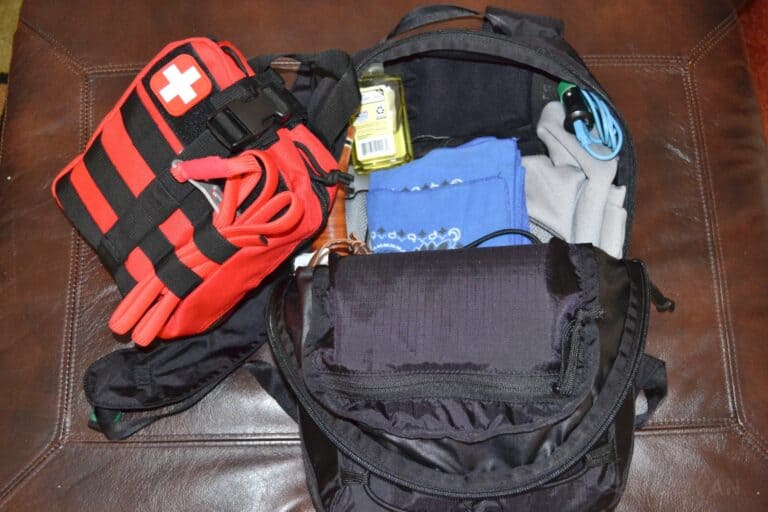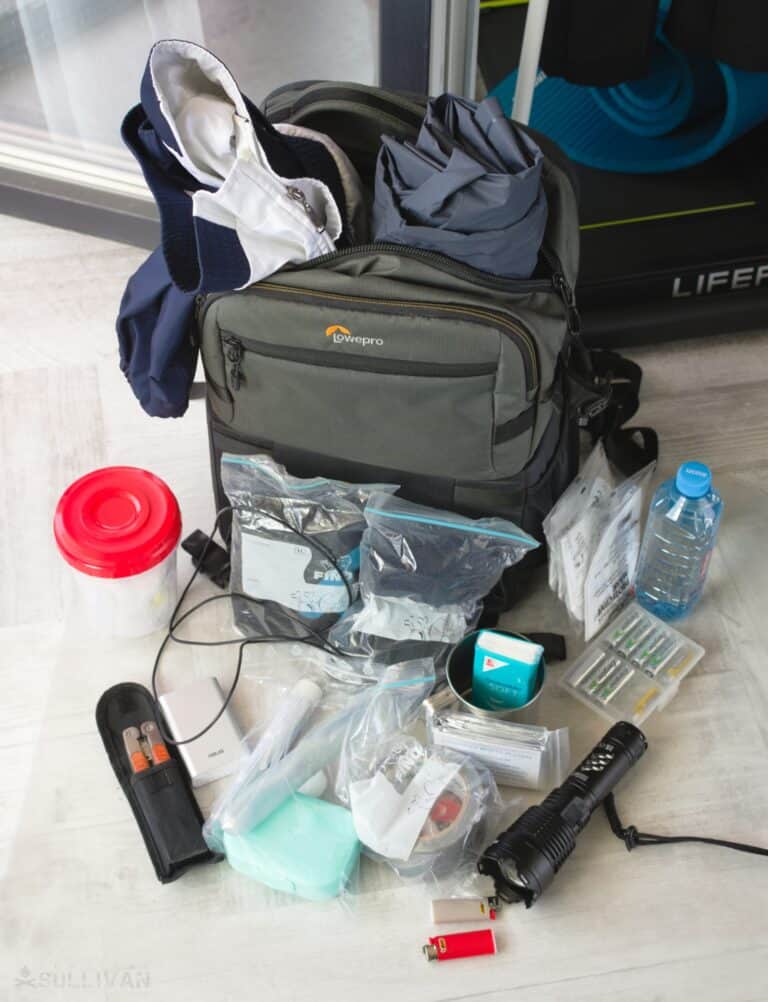When it comes to disaster preparedness, you’re always advised to have a bag of supplies packed and ready to go. That’s the only way you’ll be able to react quickly enough when time is short.

Plus, you’ll appreciate the convenience of having everything you need and one convenient place without having to think about it.
You’ve probably heard of various concepts for the purpose, such as the bug-out bag or bob, the INCH bag, the get-home bag and more.
Have you heard of a go bag? What exactly is a go bag?
A go bag is simply a small emergency preparedness bag focusing on only essential supplies and critical items. A go bag is typically prepared because it is lightweight, easy to carry, and can provide life support for short-duration crises.
A go bag is just another way to keep all of the things you might need to survive a crisis in one place and make them readily available in case you have to dash out the door.
You aren’t necessarily reaching for a go bag if you’re heading into the wild blue yonder and not coming back, or if you suspect you’ll be surviving in the wilderness for an extended period, but it can provide what you need until you get to where you need to go or help arrives.
Keep reading and I’ll tell you all about a go bag, how to choose it and what to put in it…
How Does a Go Bag Differ from a Bug-Out Bag?
The question I get asked the most often concerning go bags is how they differ from bug-out bags, or if go bag is just another synonym for bug-out bag.
To clear this up, yes, you’ll sometimes see the term go bag used interchangeably with bug-out bag, signifying a large and well-stocked pack that can keep you and yours alive for at least three days in case you have to evacuate.
But in the great taxonomy of emergency preparedness luggage, for lack of a better term, a go bag fills a distinct niche.
A go bag is what you choose if you need to evacuate straight away in advance of or in the aftermath of a significant disaster.
But a disaster that isn’t going to send society or your region into chaos.
If you know help is on the way, or you know you can get help some distance from where you are, a “go bag” is only going to provide the bare minimum of what you need to see you through.
And that’s enough! Not every situation will take weeks or months to resolve…
The payoff with a go bag is that it is light, easy to carry, easy to store, inexpensive and convenient compared to a bug-out bag or larger survival bags.
Go Bags Usually Include Only Critical Items
As a rule of thumb, a go bag will only include the most critical supplies you need to survive or sustain operations while you are waiting for help to arrive or while you are traveling to a safe location.
Yes, everybody wants to bring the kitchen sink with them, just in case, but the ethos of the go bag is light, fast and flexible.
Accordingly, there might be things you leave out of a go bag that would be considered virtually unthinkable if you were packing and preparing a bug-out bag or something larger.
I’ll give you an example list for my personal go bag at the end of this article.
Go Bags Should Be Light and Easy to Carry
A go bag should stay very light. Ideally, you don’t want to have to carry it at all because you’ll evacuate by vehicle, but if you do it is something you should be able to carry absolutely all day with no problems whatsoever.
A good rule of thumb is that you should keep a go bag under 20 pounds, and at 15 pounds or less is even better.
Remember, you’re only trying to carry what you absolutely need to survive and stay reasonably comfortable while dealing with problems you should expect to encounter along the way.
What Kind of Bag is Best for a Go Bag?
The great thing about picking a backpack for your go bag is you have a lot more versatility considering its mission.
A go bag doesn’t have to be extremely overbuilt like a bug-out bag or INCH bag, and it doesn’t even need to be a special tactical or hiking pack in the first place.
A common school book bag will work just fine, or any other pack you prefer.
Sling packs are one of my favorite for the purpose because they’re easy to bring around to the front of your body while still wearing them, which makes them a lot more convenient to access on the move or when you’re seated in a vehicle or anywhere else.
Considering that you won’t be hauling a ton of weight in your go bag, features like frames, fit and long haul comfort are less important compared to a bug-out bag.
Now, this isn’t to say that you should skimp out on overall quality, because a busted strap or a blown-out bottom is still going to be a showstopper, but you need not drop tons of money on a “Gucci” pack for the purpose, either.

What Sorts of Items Does a Go Bag Contain?
As mentioned, a go bag is going to include emergency preparedness gear but a very limited lineup of that gear, only the most critical things that you and your family might need.
Note that because the go bag is supposed to be so lightweight, it’s a great idea to have an individual go bag for every person in your family or group that they are responsible for carrying.
This keeps the overall weight down and makes the logistics of packing and accounting for these items easy…
Consider the following list, taken from my own go bag, as a good core to build from and don’t be afraid to add or delete items as necessary. But watch the weight!
- Water bottle with lightweight portable filter.
- Food, energy bars, trail mix, etc.
- Emergency blanket or poncho liner
- Waterproof tarp
- Matches or lighter and tinder
- First-aid kit with tourniquet
- Backup prescription eyewear, if needed.
- Prescription medication doses, if needed
- Dust mask
- Gloves
- Flashlight and batteries
- Cell phone charger and power bank
- Good folding knife or multi-tool
- Baby wipes
- Small roll of duct tape
- Shirt, pants, underwear and socks.
- Small roll of paracord
- Waterproof Notepad and pen
- Compass and road atlas

Tom Marlowe practically grew up with a gun in his hand, and has held all kinds of jobs in the gun industry: range safety, sales, instruction and consulting, Tom has the experience to help civilian shooters figure out what will work best for them.
